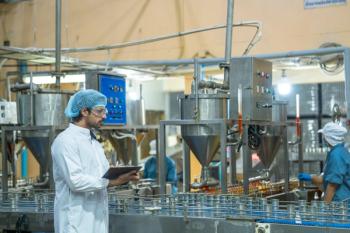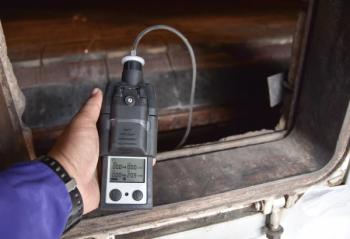
Anasys Licenses Nanoscale Mass Spectrometry Imaging Technology from Oak Ridge
Anasys Instruments Corporation (Santa Barbara, California) has licensed a Department of Energy Oak Ridge National Laboratory (ORNL) (Oak Ridge, Tennessee) nanoscale mass spectrometry imaging technology that allows for simultaneous chemical and physical characterization and could lead to advances in materials and drug development.
Anasys Instruments Corporation (Santa Barbara, California) has licensed a Department of Energy Oak Ridge National Laboratory (ORNL) (Oak Ridge, Tennessee) nanoscale mass spectrometry imaging technology that allows for simultaneous chemical and physical characterization and could lead to advances in materials and drug development.
The technique, which combines atomic force microscopy and mass spectrometry, fills a void and streamlines analytical processes that are vital to science and industry, according to Roshan Shetty, chief executive officer of Anaysis Instruments. He also noted that the technology improves the current spatial resolution of ambient methods for mass spectrometry imaging by a factor of more than 100, resulting in imaging resolution as small as 250 nanometers, or 1/400th the thickness of a human hair.
The technology is the culmination of several years of research by a team led by Gary Van Berkel of ORNL’s Chemical Sciences Division. The team’s research has focused on mass spectrometry-based imaging, pushing toward nanoscale imaging at ambient conditions using atomic force microscopy.
Van Berkel noted that the patented technique opens up many opportunities.
“This new capability allows us to map, for instance, the degradation of organic compound-based solar cells at the chemical level, the metabolites produced from living bacterial colonies, and the distribution of dosed pharmaceuticals and their metabolites in tissues and cells,” Van Berkel said.
Measurements of physical and chemical processes using these new tools could provide the knowledge required to boost research in areas ranging from energy materials to drug discovery, according to Van Berkel.
Other members of the invention team are Stephen Jesse of ORNL’s Center for Nanophase Materials Sciences, and Olga Ovchinnikova, also a member of the Chemical Sciences Division. The research was funded by the Department of Energy’s Office of Science.
Newsletter
Get essential updates on the latest spectroscopy technologies, regulatory standards, and best practices—subscribe today to Spectroscopy.





